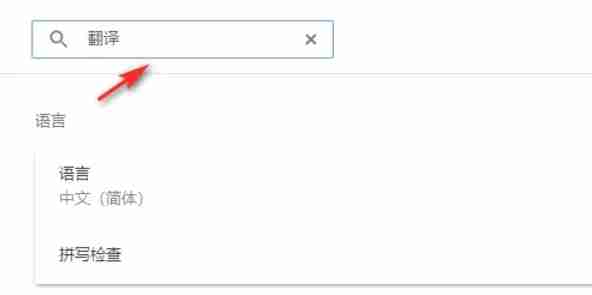The charm of unlocking dynamic web pages: Deep into the world of DHTML
This article is excerpted from SitePoint's new book "DHTML Utopia: Modern Web Design Using JavaScript & DOM", which explores DHTML technology in-depth, teaching you how to create a rich user experience without sacrificing usability and standard compatibility. Author Stuart Langridge uses web standards and separates code and tags to build engaging, practical and interactive DHTML applications.
This book covers more than 300 pages of DHTML skills, including Document Object Model (DOM), Remote Scripting, Ajax, XML-RPC, and XPath technologies to help you create your own web project applications. For example, build a hierarchical navigation menu that complies with standards; create animated tooltips; use regular expressions to verify form data and provide dynamic feedback; build an AJAX registration form to tell the user whether the username selected has been occupied without submitting the form.
The following excerpts will take you to quickly understand the core technologies and applications of DHTML. For more information, please visit the book page or view the full catalog. You can also download the PDF version. Now, let's go to Chapter 1.
Chapter 1: Overview of DHTML Technology
This chapter briefly provides a brief overview of the basics required to build a DHTML website, including the combination of HTML, CSS and JavaScript. DHTML is not a single technology, but a clever fusion of these three technologies, like the art of cooking, the final result may be simple home-cooked dishes or grand banquets.
HTML Basics
The website is written in HTML. In order to build a successful DHTML enhanced website, your HTML must meet two conditions: valid and semantic.
-
Fefficient HTML: Follow the rules of the HTML specification and make sure your HTML code complies with the standards, which is crucial for building DHTML. This includes correctly nesting tags, closing container tags, and using document type declarations (DOCTYPE). Use the W3C validator to check the validity of HTML.
-
Semanticized HTML: Use HTML tags to describe the properties of document elements, not their appearance. For example, use the
<code><p></p>tag to represent paragraphs and use the<blockquote></blockquote>tag to represent references, rather than use the<br>or<font></font>tag to control text formatting. Semantic tagging makes it easier to apply DHTML technology.
Add CSS
Cascading Style Sheets (CSS) are used to describe how HTML is rendered, that is, to define the appearance of each element on the page. Through CSS style, DHTML pages can independently process the appearance and content of the page, achieving clean separation.
Add JavaScript
JavaScript is a programming language used to add dynamic behavior to a website. HTML defines the page structure, CSS defines the page appearance, and JavaScript defines user interaction behavior, such as clicking buttons, dragging an image, or moving a mouse. JavaScript works with DOM, associating actions with different events (mouse over, drag, and click).
Tool recommendations
A good JavaScript development environment and code editor can greatly improve development efficiency. It is recommended to use Mozilla Firefox for debugging and use a code editor that supports syntax highlighting.
Chapter 2: Document Object Model (DOM)
DOM describes an HTML page as a set of objects that can be accessed by JavaScript programs, which maps page elements to a tree structure (DOM tree). Each element becomes an element node and each text fragment becomes a text node. The structure of the DOM tree corresponds to the nesting level of HTML tags. Effective and correctly nested HTML is essential for building the right DOM tree.
Traveling through the DOM tree
Traveling through the DOM tree refers to the process of accessing each node in the tree in sequence. This is usually implemented using recursively. The document.getElementById() method is used to get the element of the specified ID, and the document.getElementsByTagName() method is used to get all elements of the specified type.
Operating DOM elements
You can use JavaScript to modify the properties, text content and style properties of DOM elements. The appendChild() method is used to add new child nodes, the insertBefore() method is used to insert new child nodes before the specified node, the removeChild() method is used to delete child nodes, and the cloneNode() method is used to replicate nodes.
DOM operation example: Extended form and modular image switching
This chapter provides two examples: an extensible form that allows users to dynamically add input fields; and a modular image switching that automatically detects and sets image switching effects through JavaScript without manually modifying HTML code.
Chapter 3: Handling DOM Events
Events are actions that occur on elements, such as mouse clicks, form changes, etc. The core of DHTML programming is event processing, that is, writing code to respond to events.
Event Handling Method
Modern DOM event handling uses the addEventListener() method (and IE's attachEvent method) to attach an event listener to an element. The event listener function receives an event object as a parameter, which contains detailed information about the event, such as target elements, mouse coordinates, etc.
Event bubbling and blocking default behavior
Event bubble refers to the process in which an event bubbles upward from the target element to its ancestor element. The stopPropagation() method can prevent the event from bubbled. The preventDefault() method can block the default behavior of events, such as preventing link jumps.
Cross-browser event handling
To ensure that the code works properly in different browsers, cross-browser-compatible event handling methods need to be used, such as using the addEvent() function to uniformly handle the addEventListener() and attachEvent() methods.
Event processing example: Smart links and table highlighting
This chapter provides two examples: smart links, allowing users to choose whether to open a link in a new window; table highlights, highlighting rows and columns of the cell when the mouse hovers over a table cell.
Chapter 4: Detecting browser features
In order to ensure that DHTML enhancements do not cause problems in browsers that do not support these functions, browser feature detection is required.
Property detection
Feature detection refers to a method that directly checks whether a browser supports a specific function, rather than inferring the functionality it supports by identifying the browser type. This includes checking whether the DOM method and attribute exist.
Example of feature detection: scrollable image
This chapter provides a scrollable image example that uses feature detection to ensure that the code works properly in different browsers and handles browser differences in mouse coordinate acquisition.
The remaining chapters of this book will further explore more advanced techniques and applications of DHTML.
(The picture remains the original format and position unchanged)






























The picture cannot be displayed because the picture link cannot be accessed. Please make sure the image link is valid.
The above is the detailed content of DHTML Utopia: Modern Web Design Using JavaScript & DOM. For more information, please follow other related articles on the PHP Chinese website!

Hot AI Tools

Undress AI Tool
Undress images for free

Undresser.AI Undress
AI-powered app for creating realistic nude photos

AI Clothes Remover
Online AI tool for removing clothes from photos.

Clothoff.io
AI clothes remover

Video Face Swap
Swap faces in any video effortlessly with our completely free AI face swap tool!

Hot Article

Hot Tools

Notepad++7.3.1
Easy-to-use and free code editor

SublimeText3 Chinese version
Chinese version, very easy to use

Zend Studio 13.0.1
Powerful PHP integrated development environment

Dreamweaver CS6
Visual web development tools

SublimeText3 Mac version
God-level code editing software (SublimeText3)

Hot Topics
 Java vs. JavaScript: Clearing Up the Confusion
Jun 20, 2025 am 12:27 AM
Java vs. JavaScript: Clearing Up the Confusion
Jun 20, 2025 am 12:27 AM
Java and JavaScript are different programming languages, each suitable for different application scenarios. Java is used for large enterprise and mobile application development, while JavaScript is mainly used for web page development.
 Mastering JavaScript Comments: A Comprehensive Guide
Jun 14, 2025 am 12:11 AM
Mastering JavaScript Comments: A Comprehensive Guide
Jun 14, 2025 am 12:11 AM
CommentsarecrucialinJavaScriptformaintainingclarityandfosteringcollaboration.1)Theyhelpindebugging,onboarding,andunderstandingcodeevolution.2)Usesingle-linecommentsforquickexplanationsandmulti-linecommentsfordetaileddescriptions.3)Bestpracticesinclud
 Javascript Comments: short explanation
Jun 19, 2025 am 12:40 AM
Javascript Comments: short explanation
Jun 19, 2025 am 12:40 AM
JavaScriptcommentsareessentialformaintaining,reading,andguidingcodeexecution.1)Single-linecommentsareusedforquickexplanations.2)Multi-linecommentsexplaincomplexlogicorprovidedetaileddocumentation.3)Inlinecommentsclarifyspecificpartsofcode.Bestpractic
 JavaScript Data Types: A Deep Dive
Jun 13, 2025 am 12:10 AM
JavaScript Data Types: A Deep Dive
Jun 13, 2025 am 12:10 AM
JavaScripthasseveralprimitivedatatypes:Number,String,Boolean,Undefined,Null,Symbol,andBigInt,andnon-primitivetypeslikeObjectandArray.Understandingtheseiscrucialforwritingefficient,bug-freecode:1)Numberusesa64-bitformat,leadingtofloating-pointissuesli
 JavaScript vs. Java: A Comprehensive Comparison for Developers
Jun 20, 2025 am 12:21 AM
JavaScript vs. Java: A Comprehensive Comparison for Developers
Jun 20, 2025 am 12:21 AM
JavaScriptispreferredforwebdevelopment,whileJavaisbetterforlarge-scalebackendsystemsandAndroidapps.1)JavaScriptexcelsincreatinginteractivewebexperienceswithitsdynamicnatureandDOMmanipulation.2)Javaoffersstrongtypingandobject-orientedfeatures,idealfor
 How to work with dates and times in js?
Jul 01, 2025 am 01:27 AM
How to work with dates and times in js?
Jul 01, 2025 am 01:27 AM
The following points should be noted when processing dates and time in JavaScript: 1. There are many ways to create Date objects. It is recommended to use ISO format strings to ensure compatibility; 2. Get and set time information can be obtained and set methods, and note that the month starts from 0; 3. Manually formatting dates requires strings, and third-party libraries can also be used; 4. It is recommended to use libraries that support time zones, such as Luxon. Mastering these key points can effectively avoid common mistakes.
 JavaScript: Exploring Data Types for Efficient Coding
Jun 20, 2025 am 12:46 AM
JavaScript: Exploring Data Types for Efficient Coding
Jun 20, 2025 am 12:46 AM
JavaScripthassevenfundamentaldatatypes:number,string,boolean,undefined,null,object,andsymbol.1)Numbersuseadouble-precisionformat,usefulforwidevaluerangesbutbecautiouswithfloating-pointarithmetic.2)Stringsareimmutable,useefficientconcatenationmethodsf
 Why should you place tags at the bottom of the ?
Jul 02, 2025 am 01:22 AM
Why should you place tags at the bottom of the ?
Jul 02, 2025 am 01:22 AM
PlacingtagsatthebottomofablogpostorwebpageservespracticalpurposesforSEO,userexperience,anddesign.1.IthelpswithSEObyallowingsearchenginestoaccesskeyword-relevanttagswithoutclutteringthemaincontent.2.Itimprovesuserexperiencebykeepingthefocusonthearticl






